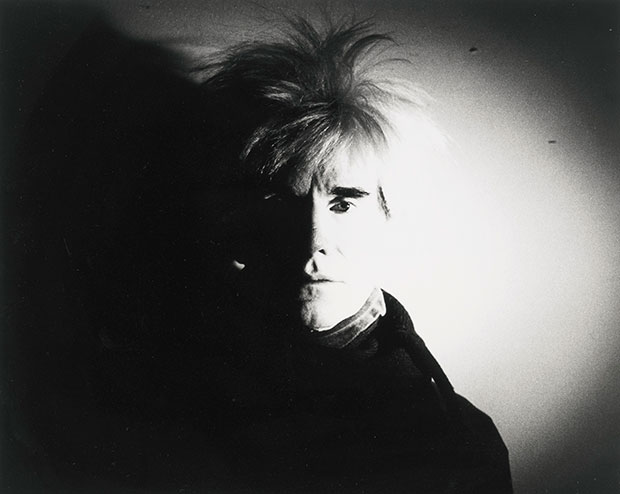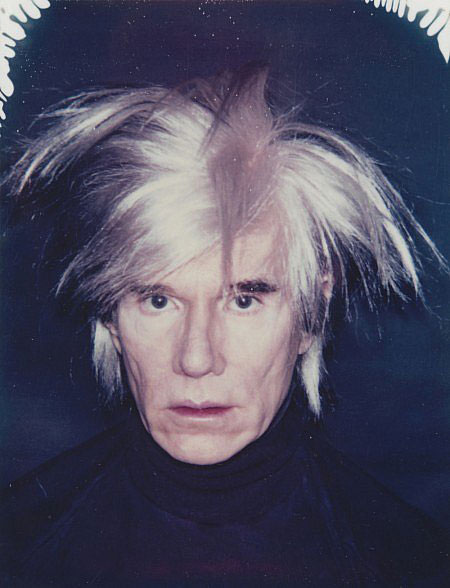
From Book to Bid – Andy Warhol’s Fright Wig
The loss of friends and failing health inspired his most iconic portraits - one of which is up for auction at Sotheby's
As we go into the weekend serious collectors' eyes are on the important post-war and contemporary art sales being held at leading auction houses in London and New York next week. There are some truly impressive works going on the block at Sotheby's, Christie's and Phillips, many of which have interesting stories attached to them. With this in mind, we've benn bringing you some daily insight stories into some of the pieces on sale, courtesy of our wonderful catalogue of contemporary and modern art books.
Earlier this week, as part of this series, From Book to Bid, we highlighted author Paul Moorhouse’s take on Cindy Sherman’s Untitled #470, up for auction at Phillips' evening sale in New York on May 14, Adrian Searle's thoughts on Peter Doig’s painting Swamped, lot 5A in the Looking Forward to the Past sale, to be held at Christie's in New York on Monday 11 May and Yayoi Kusama's Infinity Nets (ZYA) which goes under the hammer at Christie's in New York on Monday, 11 May.
Today we're bringing you some of the background to Andy Warhol's Fright Wig series, an example of which, Lot: 228, is up for auction at Sotheby's on 13 May and is expected to reach between $30,000 and $50,000.
"Many artists have left posterity with images of themselves, notably, among others, Rembrandt and Picasso," writes Joseph D Kettner II, in our Phaidon Focus book on Andy Warhol. "When we look at their self-portraits we glean insights into the character of the artist," he continues. "But it is important to remember that the artists have consciously crafted the impression that they wish to leave us. Warhol has joined the prominent self-portraitists over history. Tracing the development of his portrayals provides insight into his evolving construction of a public persona."
Warhol began drawing self-portraits while still a teenager in 1942.In his portraits from the following decade we see a shy artist staring back at us, while in those from the 1960s we see a confident Pop Star. After his attempted murder by Valerie Solanas in 1969 Warhol made no more portraits until 1978. In these, he presented himself as a reflective soul, examining his career and evaluating his life. Kettner takes up the story of the Fright Wig series, begun nearly ten years later under very different circumstances.

"Nearly a decade after these self-portraits, Warhol produced another series in 1986, the ‘Fright Wig’ self-portraits. In these paintings the artist created what was to become the most iconic image of himself. Commissioned by London art dealer Anthony d’Offay, these were created during a difficult time in his life when he was confronting the loss of friends and the erosion of his own fragile health. At the opening of the show the self-conscious Warhol described the paintings as ‘the worst pictures you’ve ever seen of yourself’. Yet, these self-portraits intrigued him enough to continue the series beyond the commission and create seven different variations on the subject: with the wig spiked up, closely cropped around his face, in negative, with glasses, and on camouflage grounds. D’Offay likened the images to a death mask and, indeed, in these paintings we see Warhol as the wizened artist, far removed from the wide-eyed days of Pop stardom, and looking into the face of his own mortality. Far from ceding to the finality of his deathly visage, however, the prospect of his demise appears to have motivated the artist into a torrent of creative activity over the last year of his life."
If you're thinking of bidding on Fright Wig, or indeed any other works on auction this season, we wish you luck. You can learn more about Andy Warhol in the following books: Focus, Catalogue Raisonné Volume 4, Portraits, and Giant Size. And if you want to spend a little more showing your love, check out the Warhol prints, photos (and surfboards) over at Artspace.